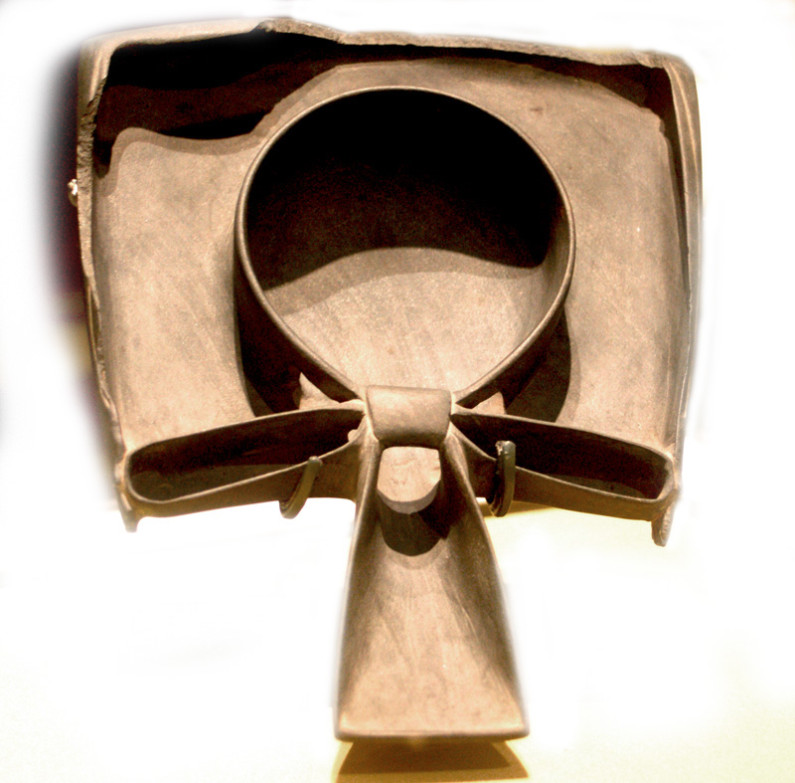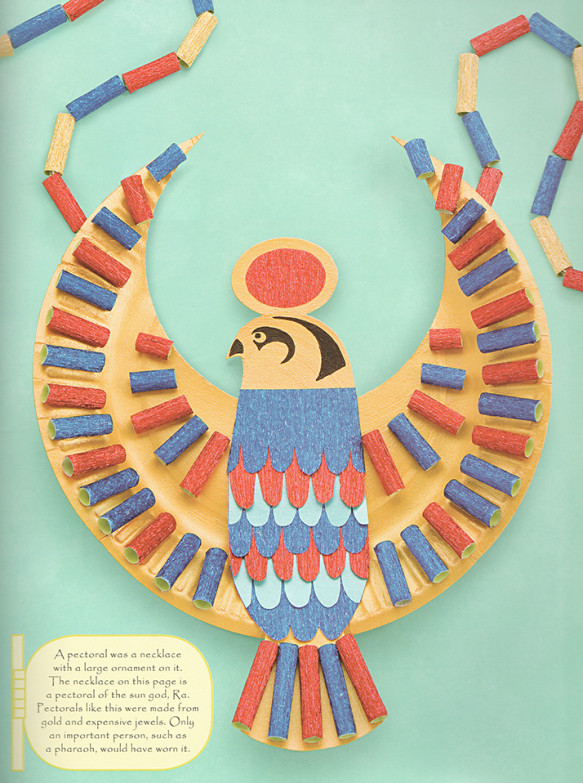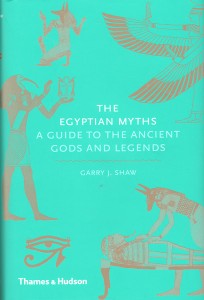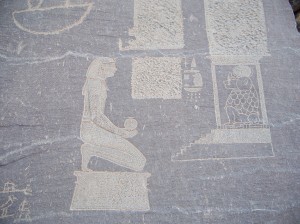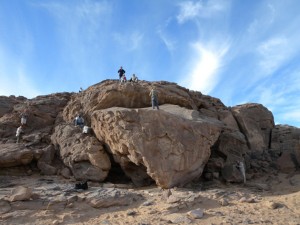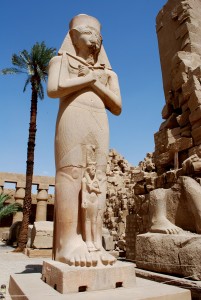Recent Comments Back!
If like me you have been missing a way of seeing if there are any new comments you will be pleased to hear that the Recent Comments page is back and is on the sub-menu below the home (“Welcome”) page. At present it only shows a small snippet of the comment – I will keep searching for something better. So it is not ideal but hopefully you see it as a step forwards!
Editorial – Magazine Edition 10
A very warm welcome to Edition 10 of the Magazine.
First, it is with enormous pleasure that we welcome back Brian Alm to the Magazine. Brian has penned a new series for Egyptological: “Read Like an Egyptian” — Art in Ancient Egypt. In Part 1 Brian begins with how art should be defined in the context of ancient Egypt is defined, the role it performed, and its connection with the divine. Brian introduces us to the key concepts, the themes that run through all Egyptian belief and can be identified repeatedly in Egyptian art, and explains how these tie into Egyptian ideas of life and death. He addresses the reasons for the highly stylized designs that lasted for 100s of years, investigates the canons of Egyptian art and explores the techniques employed by the artists responsible for executing the designs. It is a beautifully written insight into what Egyptian art was for and the ideas that it communicated. And, as usual with Brian’s work, it is thoroughly engaging and involving.
We are very glad to welcome Dr Garry Shaw to Egyptological, with our thanks for agreeing to be interviewed about his book “The Egyptian Myths. A Guide to The Ancient Gods and Legends (Thames and Hudson 2014). We asked our readers both here and on Facebook to contribute questions, which were added to those that I had myself, and together made up 20 questions for Dr Shaw. You an see the interview in Egyptologically Speaking: Interview with Dr Garry Shaw about “The Egyptian Myths.” I was particularly impressed, when I read “The Egyptian Myths” with the clarity of the thinking and the way in which Dr Shaw’s fluent style of writing communicates some often very complex concepts. For those who have not yet read the book, the interview explains why Dr Shaw was interested in writing a book on a subject already discussed by other authors, and how his approach differs from them. He explains why he feels that mythology is important and what role it may have had in Egyptian life. At the end, he also reveals his favourite myth.
Finally, continuing my interest with minor and localized deities, Andrea Byrnes has contributed an article about Meretseger, a serpent deity unique to Deir el Medina: Meretseger: She Who Loves Silence. The cobra deity at Deir el-Medina. With no narrative myths surrounding her, she is often an elusive deity, but she was chosen frequently by the residents of the village in an expression of personal piety, and the stelae dedicated to her offer insights into her role and her character.
In our Magazine Reviews section our main article is by Dylan Bickerstaffe, Book Review: Zahi Hawass, Discovering Tutankhamun, a review of the glossy Zahi Hawass offering, Discovering Tutankhamun. From Howard Carter to DNA published by the American University in Cairo Press, 2013. As one would expect from Dylan, his approach which is both analytical and uncompromising, picking out the inaccuracies and inconsitencies in the text, discussing some of the problems and providing readers with a very good sense of the pros and cons of a book that has very mixed virtues.
After a visit to the exhibition Ancient Lives. New Discoveries, which looks at what information can be detected from non-invasive examinations of mummies, Andrea Byrnes wrote a visitor’s impression of the exhibits and their presentation.
Andrea Byrnes has also contributed a review of Mysteries of the Libyan Desert by W.J. Harding King. The book is an account of Harding King’s explorations of the Western Desert in the early 1920s, in the employment of the Geographical Society. His job was to map the Egyptian desert areas to the west of the Nile. He used Kharga, Dakhleh and Farafra as starting points, and his accounts of his travels in the desert and life in the oases are intelligent and vivid, bringing the world that he found at that time to colourful life.
Our In Brief section also has three new articles. The first is by Brian Alm, who has followed up on his very popular article Confessions of a Part-time Lecturer to Newcomers in Egyptology: Cheops or Khufu? with his Decoder of Greek Terms. Gwyn Ashworth-Pratt has done an excellent job of writing up the February 2014 Dorset Study Day: Kingston Lacy, Dorchester and Bournemouth, talking about the importance of John Banks, his contribution to the early work deciphering hieroglyphs and his Kingston Lacy collection, as well as the nearby Egyptology collections at Dorchester and Bournemouth. Finally, there is a short book review by Andrea Byrnes of children’s book Egyptian Things to Make and Do, which provides children with the guidelines to make everything from a Horus pectoral (based on a paper plate) to a set of canopic jars (with the assistance of the gold and black stickers in the centre of the book).
We hope that you enjoy it! Don’t forget to let us know what you think or ask questions by commenting in reply to the articles or posting on our Faceboook page.
With a great many thanks to Karen Bradley Hauck for her help with the proof reading.
In in our upcoming editions:
Stuart Tyler, whom many of you will know from the Hatshepsut Project, has written a paper for the Journal section about Osiride heads from Deir el-Bahri. I have seen the penultimate draft and we are looking forward to publishing it in the not too distant future.
Janet Robinson is hoping to contribute the final part of her Vernacular Voices series with part 3 in a future edition, with more insights into Greek inscriptions in the Eastern Desert. If only we can drag her away from her current research into the Western Desert!
Part 2 of Garry Beuk’s article about the life and career of Labib Habachi, Labib Habachi: A Life to Tell, will be in the next Magazine edition, after which Garry will be working on a new two-part article about the life of James Breasted.
And finally, Kate Phizackerley is working on an article about encoding hieroglyphs, which will be of interest to many of us who have either flirted with or committed to learning ancient Egyptian.
Andie Byrnes and Kate Phizackerley
Egyptological
www.egyptological.com
contact@egyptologicalonline.net
Facebook: www.facebook.com/groups/egyptological
Twitter: https://twitter.com/egyptological
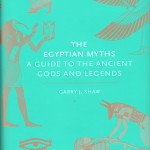
An interview with Dr Garry Shaw – any questions?
Dr Garry J. Shaw’s new book “The Egyptian Myths” has just turned up on my doorstep. Dr Shaw has very kindly agreed to be interviewed about the book for Egyptological, so I am assembling questions as I read. Does anyone have any questions that they would like me to put to Dr Shaw? You can either post here or email on the usual address.
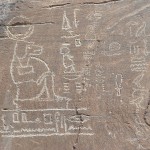
11th December – update about the Photo Albums
When we shifted things around after the hackers did so much damage to the site, one of the casualties was the Photo Album feature. We no longer have them on the site, but it seemed a shame to lose them entirely so we are resurrecting some of the previous Albums (with the permission of the copyright owners of the photographs) on Facebook. We have always been in two minds about the value of a Facebook page, given that readers can comment on Egyptological itself, but there are obvious benefits and resurrecting the Photo Albums is one of them.
So today I put up our first of the the former sets – a collection of photographs of the Wadi Hammamat, a thoroughfare used for thousands of years in the Eastern Desert, by Kate Gingell (thanks Kate!). You can find our Facebook page at https://www.facebook.com/groups/egyptological.
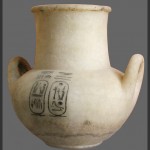
4th December 2013 – The latest news from Egyptological
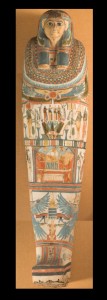 Today we published the 6th edition of the Journal and the 9th edition of the Magazine, after a tough year following the professional attack on the site by hackers in 2012. You can find our latest Editorial on the site, which summarizes the latest content. We do hope you enjoy it.
Today we published the 6th edition of the Journal and the 9th edition of the Magazine, after a tough year following the professional attack on the site by hackers in 2012. You can find our latest Editorial on the site, which summarizes the latest content. We do hope you enjoy it.
As most of our regular readers know, although we published an edition earlier this year, it has taken us time to get back on our feet, and it has been done with so much support from those of you have been with us since the earliest days of Egyptological. We are delighted to report that things are very nearly back to normal on our new web host.
Obviously, you will notice that there are still some niggling issues to resolve. For example, there are still some images missing from older articles but they will be put right soon. Some of the links on the site no longer work, and we have been pulling together an inventory of those, with a view to fixing them. So there are still various tasks to be carried out, and we are working our way through them.
The news everywhere else is good and although you can always comment about articles on the site itself, we also now have a new Facebook page at https://www.facebook.com/groups/egyptological. As ever we thank both authors and readers for their continued support.
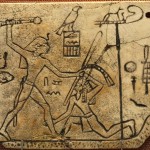
Editorial – Journal Edition 7 and Magazine Edition 9
A very warm welcome to the new edition of Egyptological.
After a rocky few months following the damage that professional hackers inflicted on Egyptological, we have moved the site to a new host and are very pleased to be back. This is our first new edition since April, so we are delighted to be able to introduce some new content in the Journal, Magazine and In Brief sections. Our new content covers the Predynastic, New Kingdom and Graeco-Roman periods, as well as delving into 19th Century A.D. collecting. It’s a good mix.
In the Journal, Janet Robinson has provided the second installment in her Vernacular Voices project, the first part of which was introduced on Egyptological on 31st May 2012. Her project to learn more about Egypt in the Roman era by reading inscriptions left by ordinary people has led her investigation of Roman use of the Eastern Desert and to find out more about the people who left their names there. In Vernacular Voices II: Ptolemaios, Phatres and Eireneis – Three Romano-Egyptians in Wadi Qash, she discusses unpublished graffiti signatures from a cave site in the Wadi Qash, and discusses the otherwise poor evidence for those travelling through or living in the wadi.
In The Origin and Early Development of the Smiting Scene, Francis Lankester, who specializes in the analysis of images from the Predynastic period, explores the development of the iconic image of the king striding forward, weapon held over his head, enemies underfoot. He begins with an analysis of early objects that may have been precursors of the Namer Palette. His analysis of the smiting scene on the Palette itself offers a new perspective on of what it represents. Dr Lankester then proceeds to look at later examples, following the development of the scene into the Old Kingdom before drawing together his conclusions about the early development of the classic scene.
In the Magazine, Dylan Bickerstaff continues his series on the Cross-Armed position adopted by kings of Egypt, mainly in the New Kingdom. The series began with Part 1 in the last edition. In The Significance of the Crossed-Arm Pose, Part 2: Osiris, The Osiris and the Osirides, he continues to question why the kings of Egypt chose to portray themselves in various crossed-arm poses. He examines to what extent depictions of Osiris influenced the portrayal of kings, taking various types of Osirian pose in turn, using a sample of 183 depictions of Osiris to analyse their different arrangements.
The second part of Marianne Brocklehurst and the West Park Museum by Andrea Byrnes concludes the two-part account of the travels of 19th Century visitor Marianne Brocklehurst along the Nile and the construction of the museum that she built to house the objects she collected. Where Part 1 looked at Marianne’s accounts of her travels and her collecting activities in Egypt with Mary Booth, Part 2 looks at her legacy: the West Park Museum in Macclesfield, and some of the objects on display there.
In In Brief, Barbara O’Neill has continued her Egyptologically Speaking series with a short interview with Christine Lilyquist, who retired only recently after a distinguished career at the Metropolitan Museum of Art in New York. Barbara’s interview focuses on Dr Lilyquist’s investigations into material culture.
We have reviews of two very different books: Wadi Sura: The Cave of Beasts, edited by Dr Rudolph Kuper (about the rock art of the Gilf Kebir in the Western Desert) and Ancient Egypt Investigated: 101 Important Questions and Intriguing Answers by Professor Thomas Schneider.
For those who were hoping to see the second part of Gary Beuk’s article about the life and career of Labib Habachi, we are glad to say that although Gary is going through the horrors of moving house with his family at the moment (we’ve all been there!), he is still fully committed to contributing Labib Habachi: A Life to Tell . . . Part 2, so we hope to have that in the next Magazine edition.
We very much hope that you enjoy this edition. Please note that there are still problems with images on some of the earlier articles on the site, and that is in hand. Apart from that, we have recovered well. Thanks to authors and readers for continuing to be part of the team.
If you would like to write for us, do get in touch. We are always pleased to hear from new authors, whether experienced or not.
All our very best
Andie Byrnes and Kate Phizackerley
contact@egyptologicalonline.net
www.facebook.com/groups/egyptological
Latest News from November 2013
Welcome to our Site News page. If you have any questions about this or any other items on the site, please post a comemnt. You can also ask us questions by email at contact@egyptologicalonline.net or on our Facebook page https://www.facebook.com/groups/egyptological.
Latest news re recovery of Egyptological
Please see our home page (www.egyptological.com) for updates about our return to service. If the site becomes unavailable for any reason, rest assured that we are working on it. Many, many thanks for everyone’s support during this incredibly trying time.
Best, Andie.
Site news: Recent Comments Fixed & General Update
There was a problem with the Recent Comments page which is now fixed and once again it should show you the most recent comments left anywhere on Egyptological.
We are also working on the next edition of the Magazine but in the meantime we though we would share some traffic figures to show how Egyptological has been growing based on an arbitrary period of 14th November 2011 to 14th November 2012. During that period there have been 278,000 page views of which 221,000 are unique. That means that 50,00 have been people reading a page for the second or third time. It is also an under-count in terms of content because we don’t count views of images separately. Perhaps more interesting is that our material has been read by a total of 103,000 unique visitors. Thanks to all those who have contributed.
Editorial – Journal Edition 6
We prefer to publish both together but Journal articles tend to take a lot of editorial time. When you read the acknowledgements for David Smith’s article you will realise that many, many people beyond Andrea and I have contributed time to help finalise the research. We are very grateful for their assistance.
Our first article is the second part of David Smith’s paper about eclipses, which is the culmination of nearly a decade of study. It is a paper which I expect to be cited regularly by future authors because it sets a platform upon which an absolute chronology for the New Kingdom might be based. We have worked very carefully with the author to understate, rather than overstate, the conclusions. However, if we set aside the excruciatingly demanding threshold for mathematical proof and take a pragmatic approach consistent with normal practice in Egyptology, then the paper would at least given anchor dates to which an New Kingdom chronology might be attached, assuming of course that the standard chronologies are roughly correct and not out by decades which might mean new correlations need to be tested.
We are delighted that our two other papers are on subjects which will be familiar to many readers in a modern context, but not in that of Ancient Egypt.
New on Egyptological, Anthony Cagle investigates both the idea of public health in ancient Egypt and how it was experienced. Using a strong theoretical and analytical approach, Anthony considers how sanitation, hygiene and diet combined in Egyptian health in the face of various communicable diseases and locally endemic parasites. His research into a field that is rarely covered by mainstream texts provides a valuable insight into the daily challenges of life in ancient Egypt and explores how public health may be explored and discussed. If you think that you have little interest in these subjects then do please read the article anyway. Anthony’s ability as a writer brings the subject to life.
And last, but by no means least, another author new to Egyptological, Barbara Boczar shares her research on colour in Egyptian painted works from the Old Kingdom through to the New Kingdom. My late father Terry Phizackerley (PT Phiz) was an artist and from a young age he instilled in me that in order to understand art you have to understand the pigments within paints. I was taught that some pigments are much more expensive than others so, when an artist uses them, he is signalling a work that really matters, and Barbara maps the common pigments for us. She has also scoured the latest research on the degradation of colours to explain how the colours we see today are false. Above all, she considers the lexicon of Egyptian colours: how many colours did the Egyptians recognise and what were they? (By publication date, expected image permissions had not arrived. A temporary image has been included for one, but the quality is low. We have been unable to source an image for the third. Locating images is an ongoing issue for us.)
As mentioned above, on this occasion we are publishing the Magazine and Journal asynchronously so there are no Magazine articles published today. The next edition of the Magazine is likely to be in November. It is not too late to submit an article. In keeping with the theme of broad content, we have also published a photo album of Meroe. Our thanks to Jac Strijbos for sharing pictures of an important site that relatively few readers have visited.
We also continue to incrementally develop Egyptological. For this edition, we have new styling for block quotes and for tables. We are also aware that some people have problems printing, with their browser missing a line at the top and/or bottom of pages. We do have a possible solution but Andrea and I need to discuss some of the ramifications of using it before we decide to adopt it. If we don’t, we will search for an alternative.
 By Kate Phizackerley
By Kate Phizackerley